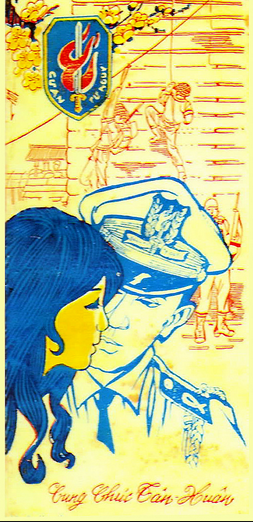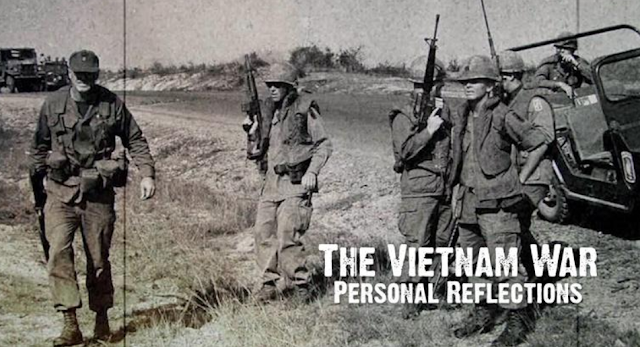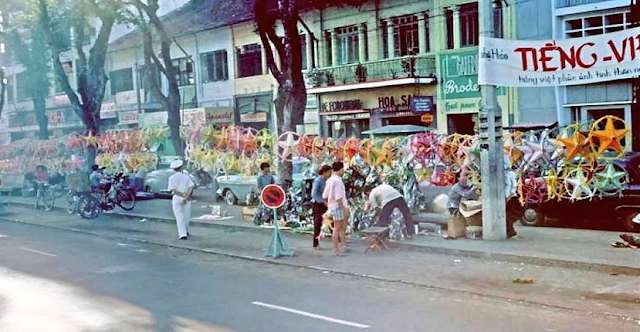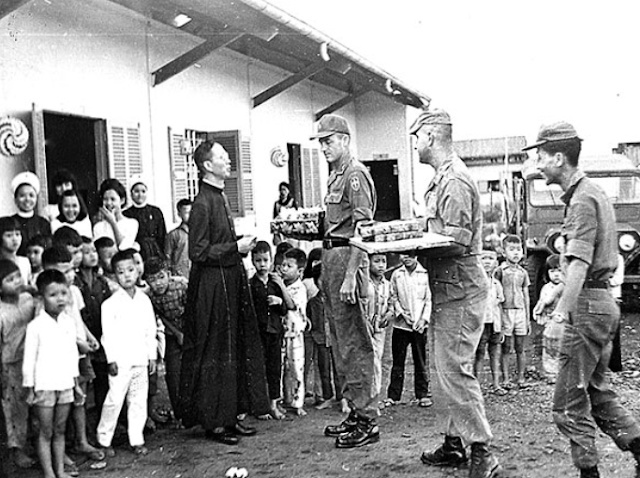Sinh hoạt độc lập, chính thức thành lập năm 1982 tại Costa Mesa California Hoa Kỳ. Strategic Technical Directorate (STD) Commando Family Founded 1982 in Costa Mesa, California U.S.A. A Nonprofit Association for members only. Danh Xưng của Hội Nha Kỹ Thuật California cũng là Nhóm Chiến Sĩ Vô Danh / QLVNCH - The Unknown Soldiers of The Republic of Vietnam. Trường Sơn Ơi Cánh Dù Ma Đã Khuất, Rừng Nhớ Người Lôi Hổ Nhớ Non Cao
Wednesday, December 26, 2018
Saturday, December 22, 2018
Thursday, December 20, 2018
Happy Holidays from NAVY SEAL FOUNDATION
As
we gather with loved ones to enjoy the holidays and as we begin to
prepare for a new year, I wanted to take a moment to share how much you
are appreciated and say "thank you" for your friendship and loyal
support of the Naval Special Warfare (NSW) community and its families.
From the first day of training until they transition back to civilian life, and even beyond, our foundation stands with those we support, equipping NSW service members and families with the programs, tools, and assistance they need to thrive in their unique and demanding environment. And, should the worst happen, we are there to comfort and care for those left behind, not for days or weeks, but for as long as it takes to get them back on their feet. This support is made possible by people like you.
By embodying the spirit of giving throughout the year, you let our warriors and families know that you have not forgotten them--that their sacrifices are recognized and appreciated not only by their loved ones but by all of us who can celebrate safely because of them. Thank you.
On behalf of the Navy SEAL Foundation, I sincerely wish you and yours a safe and special holiday.
From the first day of training until they transition back to civilian life, and even beyond, our foundation stands with those we support, equipping NSW service members and families with the programs, tools, and assistance they need to thrive in their unique and demanding environment. And, should the worst happen, we are there to comfort and care for those left behind, not for days or weeks, but for as long as it takes to get them back on their feet. This support is made possible by people like you.
By embodying the spirit of giving throughout the year, you let our warriors and families know that you have not forgotten them--that their sacrifices are recognized and appreciated not only by their loved ones but by all of us who can celebrate safely because of them. Thank you.
On behalf of the Navy SEAL Foundation, I sincerely wish you and yours a safe and special holiday.

Robin King
Chief Executive Officer
Chief Executive Officer
Friday, December 14, 2018
SOAR I ATTENDEE: Robert T "Swede" Ashton SOA #3026-GL
Swede spent a
total of 31 months in-country, working as cadre at the MACV-SOG Recondo
school for six month in 1969.
He then served at CCN from early 1970 until August 1971 as the 1-0 on RT Rattler and as a Covey Rider. Swede’s tour ended when he and Cessna 02 pilot LT Ryan were shot down near Savannakhet, Laos in late 1971. He was medevaced to the states and spent six months in the hospital, then returned to 7th Group (S3) and worked two years for Major Elliott. He was later assigned as the Race Relations NCO for 7th Group, a position he held for about one year, and then moved on to Recruiting duty in Los Angeles, where he was the top recruiter for the west sector two years running. After three years as a recruiter he was assigned to Pirmasens, Germany as the NCOIC for the Director of Industrial Operations for approximately four years. He was then assigned to Warrington, England and worked at the US Embassy as the NCOIC for the Army Attache for the last four years before retiring as a MSG. Swede has been living in England for the last 43 years and takes pride in never having lost a man on his recon team.
He then served at CCN from early 1970 until August 1971 as the 1-0 on RT Rattler and as a Covey Rider. Swede’s tour ended when he and Cessna 02 pilot LT Ryan were shot down near Savannakhet, Laos in late 1971. He was medevaced to the states and spent six months in the hospital, then returned to 7th Group (S3) and worked two years for Major Elliott. He was later assigned as the Race Relations NCO for 7th Group, a position he held for about one year, and then moved on to Recruiting duty in Los Angeles, where he was the top recruiter for the west sector two years running. After three years as a recruiter he was assigned to Pirmasens, Germany as the NCOIC for the Director of Industrial Operations for approximately four years. He was then assigned to Warrington, England and worked at the US Embassy as the NCOIC for the Army Attache for the last four years before retiring as a MSG. Swede has been living in England for the last 43 years and takes pride in never having lost a man on his recon team.
LT David Allen Lenchner, KIA 50 years ago today.
Today
we pause to remember LT David Allen Lenchner, KIA 50 years ago today.
This report was written by LT Dan Thompson after speaking with eye
witnesses like Ken Bird, Phil Bauso, and "Smitty". LT Thompson’s and his
platoon were ordered up the mountain to find Lenchner and find the hole
in the top of the mountain and get the men out.
Marble Mountain Shootout—14 December 1968, Quang Nam Providence, Republic of Viet Nam. During preceding week, Major Moore, S-2, CCN, received actionable intelligence from a wounded POW. The same sapper unit that had attacked FOB#4 on 23 August had slipped back into Marble Mountain. Major Jack Deckard, S-3, sent “A” Company Hatchet Force (Nung) and two Reconnaissance Teams, RT “No Name” (PRU), led by Specialist John “Smitty” Smith and another RT (unk), to find, close with, kill, or otherwise drive the enemy from the mountain. Straphangers, LNO Captain Randy Givens (in country three weeks) LNO LT Francis Bret and others, attached.
First platoon, LT Dan Thompson, cordoned the western base of mountain near old French Fort. One SCU was KIA and two WIA from shoebox mine. Second platoon, LT Fredrick Barbour drove deep into a large grotto. Third platoon, LT Phillip Bauso stood in reserve. Upon entry into the dark, craggy confines, 2nd Platoon came under withering crossfire that scattered the Special Commando Unit, SCU. Salvos of grenades and automatic fire wounded several SCU, Barbour and two straphangers. The platoon was pinned behind rocks as dead and wounded lay exposed to enemy fire. Several attempts to reach the injured were driven back by intense automatic fire. The firefight raged throughout the morning. Each time reinforcements attempted to relieve 2nd platoon, concentrated automatic fire drove them back. LT Barbour, straphangers and six, wounded SCU were driven deeper into the cave. Outside, 3rd platoon engaged in a running gun battle with snipers positioned in caves and spider holes along the southeast wall.
A CH-34 hovered in front of a cave midway up the southern slope of the mountain and exchanged automatic fire. The Kingbee, driven off, trailed smoke from its engine. The nine men, two with serious head wounds, were driven deeper into the cave. Short on ammunition and medical supplies, there was no way out except through a hole in the roof. They faced the imminent prospect of being overrun or hypoxia, from blood loss. Outside, Specialist Smith was critically wounded in a firefight and medevaced.
Assessing the critical situation, LT Lenchner, without directive, climbed the mountain with rope and pistol. As 3rd platoon watched from below, weapons trained to provide cover, Lenchner secured rope, Swiss Seat and carabiner, and without fear or hesitation pushed off. The enemy sprung from the cave, fired and retreated. Lenchner fell mortally wounded.
LT COL Jack Warren arrived at the base of the mountain and asked for volunteers to retrieve Lenchner’s body down. SSGT Ken Bird, RTO, observed men firing M-79 rounds into the cave. LT Bauso, friend and roommate, and unknown officer, responded. Using Lenchner’s rope, Bauso rappelled down the mountain as grenades were thrown into the mouth of the cave. Bauso lowered the body down. For his actions, LT Phillip Bauso was awarded ARCOM/V.
Late afternoon, 1st platoon found a hole on top of the mountain. One each UH1-D, without winch, failed to extract the trapped men and was driven off. By EENT 1st platoon had pulled LT Francis out by hand. That night, LT Barbour and straphanger were extracted by CH-53 as enemy machine gun fired from village. Pilot radioed “bingo” (out of fuel) and cut line. The two men crashed to the ground. With keen insight and savvy skills, SSgt Edward Bartberger was credited with saving the lives of the critically wounded. First platoon secured RON site and ushered wounded down the next morning.
For their actions 14 December 1968; Sp. 4 John “Smitty” Smith (medevaced to Japan) awarded Purple Heart (PH); LT Fred Barbour, ARCOM/V, PH; LNO LT Bret Francis ARCOM/V, PH; and LNO Captain Givens given BS/V, PH.
For selfless acts, above and beyond the call of duty, with complete disregard for his own safety as he attempted to route the enemy and provide relief to nine wounded and trapped men, LT David Allen Lenchner was awarded the Purple Heart, posthumously.
Marble Mountain Shootout—14 December 1968, Quang Nam Providence, Republic of Viet Nam. During preceding week, Major Moore, S-2, CCN, received actionable intelligence from a wounded POW. The same sapper unit that had attacked FOB#4 on 23 August had slipped back into Marble Mountain. Major Jack Deckard, S-3, sent “A” Company Hatchet Force (Nung) and two Reconnaissance Teams, RT “No Name” (PRU), led by Specialist John “Smitty” Smith and another RT (unk), to find, close with, kill, or otherwise drive the enemy from the mountain. Straphangers, LNO Captain Randy Givens (in country three weeks) LNO LT Francis Bret and others, attached.
First platoon, LT Dan Thompson, cordoned the western base of mountain near old French Fort. One SCU was KIA and two WIA from shoebox mine. Second platoon, LT Fredrick Barbour drove deep into a large grotto. Third platoon, LT Phillip Bauso stood in reserve. Upon entry into the dark, craggy confines, 2nd Platoon came under withering crossfire that scattered the Special Commando Unit, SCU. Salvos of grenades and automatic fire wounded several SCU, Barbour and two straphangers. The platoon was pinned behind rocks as dead and wounded lay exposed to enemy fire. Several attempts to reach the injured were driven back by intense automatic fire. The firefight raged throughout the morning. Each time reinforcements attempted to relieve 2nd platoon, concentrated automatic fire drove them back. LT Barbour, straphangers and six, wounded SCU were driven deeper into the cave. Outside, 3rd platoon engaged in a running gun battle with snipers positioned in caves and spider holes along the southeast wall.
A CH-34 hovered in front of a cave midway up the southern slope of the mountain and exchanged automatic fire. The Kingbee, driven off, trailed smoke from its engine. The nine men, two with serious head wounds, were driven deeper into the cave. Short on ammunition and medical supplies, there was no way out except through a hole in the roof. They faced the imminent prospect of being overrun or hypoxia, from blood loss. Outside, Specialist Smith was critically wounded in a firefight and medevaced.
Assessing the critical situation, LT Lenchner, without directive, climbed the mountain with rope and pistol. As 3rd platoon watched from below, weapons trained to provide cover, Lenchner secured rope, Swiss Seat and carabiner, and without fear or hesitation pushed off. The enemy sprung from the cave, fired and retreated. Lenchner fell mortally wounded.
LT COL Jack Warren arrived at the base of the mountain and asked for volunteers to retrieve Lenchner’s body down. SSGT Ken Bird, RTO, observed men firing M-79 rounds into the cave. LT Bauso, friend and roommate, and unknown officer, responded. Using Lenchner’s rope, Bauso rappelled down the mountain as grenades were thrown into the mouth of the cave. Bauso lowered the body down. For his actions, LT Phillip Bauso was awarded ARCOM/V.
Late afternoon, 1st platoon found a hole on top of the mountain. One each UH1-D, without winch, failed to extract the trapped men and was driven off. By EENT 1st platoon had pulled LT Francis out by hand. That night, LT Barbour and straphanger were extracted by CH-53 as enemy machine gun fired from village. Pilot radioed “bingo” (out of fuel) and cut line. The two men crashed to the ground. With keen insight and savvy skills, SSgt Edward Bartberger was credited with saving the lives of the critically wounded. First platoon secured RON site and ushered wounded down the next morning.
For their actions 14 December 1968; Sp. 4 John “Smitty” Smith (medevaced to Japan) awarded Purple Heart (PH); LT Fred Barbour, ARCOM/V, PH; LNO LT Bret Francis ARCOM/V, PH; and LNO Captain Givens given BS/V, PH.
For selfless acts, above and beyond the call of duty, with complete disregard for his own safety as he attempted to route the enemy and provide relief to nine wounded and trapped men, LT David Allen Lenchner was awarded the Purple Heart, posthumously.
Subscribe to:
Comments (Atom)


























































































